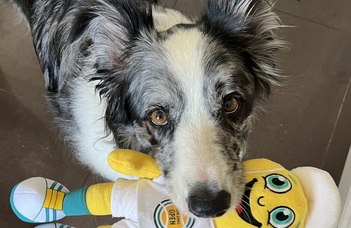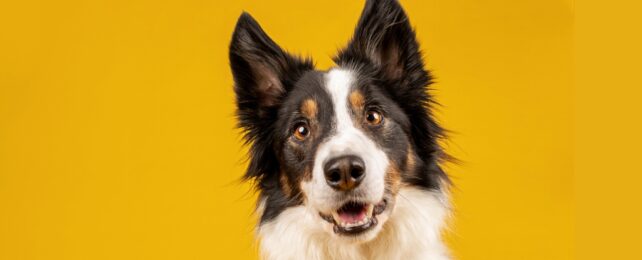Pooches, puppers, doggos – all these words mean the same thing. And, now it appears that the dogs themselves can connect similar linguistic labels, according to a new study from Eötvös Lorand University in Budapest, Hungary.
This principle of "label extension" is a pillar of language development in young children. For example, toddlers or preschoolers pick up words and then gradually learn to group those words or objects based on their use: a ladle is just a big spoon because they both scoop things; a "cup" can refer to a mug, a glass, or a flagon.
Related: Your Dog Has a Unique Ability to Read Your Mind. Here's Why.
In the animal kingdom, few non-human species demonstrate such language skills, and only after much training in captivity.
Dogs, however, can learn these skills naturally, without specific training beyond a few play sessions with their owners. Our canine pets have been closely engaging with us for tens of thousands of years, so it makes sense that they can understand commands and even use soundboards, a la trending social media shorts.
Still, it's surprising just how intuitive certain "Gifted Word Learner" (GWL) dogs can be, as they do not just learn specific words, but also their function.

"They understand the meaning behind those labels well enough to apply them to new, very different-looking toys – by recognizing what the toys were for," explains Claudia Fugazza, ethology researcher at Eötvös Loránd University and the study's lead author.
Collies are word wizards, and their most ambitious ambassador, named Chaser, was dubbed the world's smartest dog for his vocabulary of over 1,000 words. Accordingly, the study tested 8 GWL dogs, including 6 border collies and a blue heeler.
In each case, the study was conducted at the dog owner's house without any special setup. In their own abodes, the dogs learned two labels while playing with their owners: "Pull" and "Fetch". Each referred to a group of toys that could be played with by tugging (tug-of-war) or retrieving after being thrown.

The dogs were then presented with new "pull" and "fetch" toys that looked completely different from the ones they knew. Crucially, the owners did not use verbal labels when the dogs played with these new toys.
Then came the moment of truth, asking a dog to choose these new, unlabeled toys based on their function (pull or fetch). The dogs chose the correct toys significantly more often than if by chance, suggesting that they learned their functions even though the new toys looked vastly different and were not verbally labeled by the dogs' owners during play.
Therefore, the dogs extended the labels they had learned for certain toys based on their function.
This study is the first to show that dogs, and animals in general, can naturally mirror human language development.
As a result, it "opens exciting new avenues for studying how language-related skills may evolve and function beyond our own species," says Adam Miklosi, ethologist at Eötvös Lorand University and the study's coauthor.
As our loyal and constant companions for many millennia, dogs have heard us speak, sing, rant, and lament for a good portion of human history. So in addition to their own understanding of language, dogs are helping researchers understand how language develops to help humans describe and understand the world.
This research is published in Current Biology.
